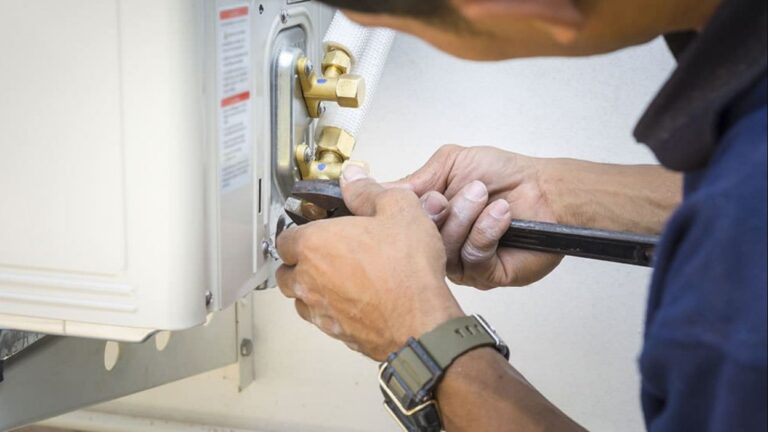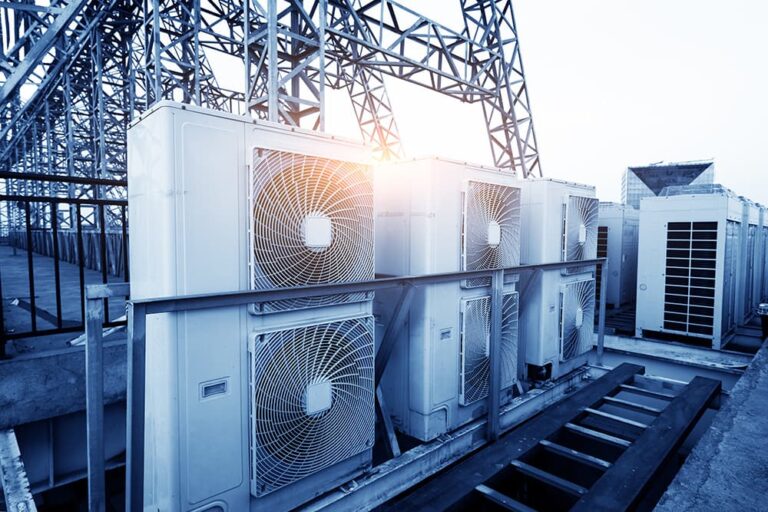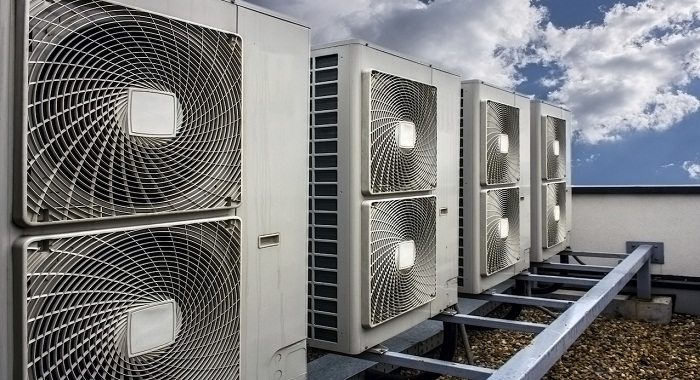10 Ways to Reduce HVAC Noise in Your Home
A quiet home is essential for comfort and relaxation. However, for many homeowners, the hum of the HVAC system can be a constant source of disturbance.
Unlike other soundproofing projects, reducing the noise from your HVAC system comes with unique challenges. The ducts conduct sound throughout the home, making it difficult to achieve effective soundproofing by just addressing the central unit.
This article will explore 10 effective ways to minimize the noise without compromising the efficiency of your heating and cooling system. From simple DIY fixes to more complex installations, there are solutions available for every budget and skill level.
By reducing HVAC noise, you can improve your quality of life, enhance sleep quality, and enjoy your home more fully.
Key Takeaways
- Understand the sources of HVAC noise and its impact on daily life.
- Discover simple and complex solutions to reduce HVAC noise.
- Improve your home’s comfort and quality of life.
- Learn about DIY fixes and professional installations.
- Enhance your overall home enjoyment and sleep quality.
Understanding HVAC Noise Sources
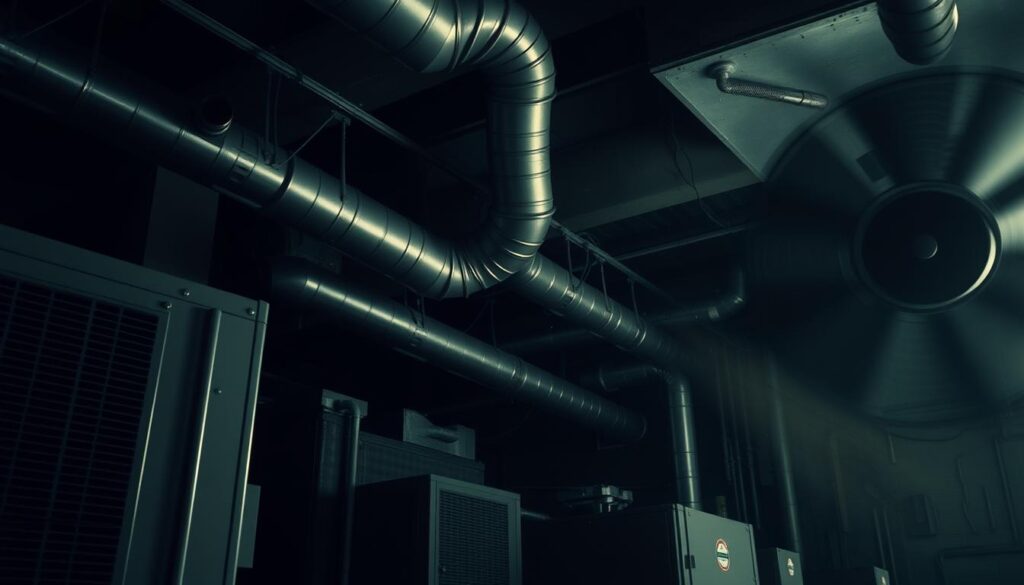
Understanding the sources of HVAC noise is crucial for effective noise reduction. HVAC systems are complex machines that can produce a variety of noises, depending on several factors including the type of system, its age, and its installation quality.
Common Types of HVAC Noise
HVAC systems can generate a range of sounds that can be disturbing. Some common types of noise include:
- Rattling sounds, which might indicate loose parts or fixtures.
- Humming or buzzing noises, often associated with the operation of the compressor or other mechanical components.
- Whistling or hissing sounds, typically caused by air leaks in the ductwork or issues with airflow.
- Banging or clanking noises, which could be due to loose components or issues with the system’s startup and shutdown processes.
- Vibrating sounds, which might suggest that the system is not properly installed or that there are issues with the balance of moving parts.
Why HVAC Systems Create Noise
HVAC systems create noise primarily through their mechanical operations. The compressor, fans, and motors all generate vibrations and sound during normal operation. For more detailed strategies on reducing HVAC noise, you can visit 1st Choice Plumbing, Heating, and Air.
The ductwork also plays a significant role in noise generation and transmission. Metal ducts can amplify and transmit sounds throughout the home through air movement and vibrations. Loose parts, aging components, and improper installation can significantly increase noise levels beyond what’s normal for HVAC operation.
The relationship between airflow and noise generation is also critical. Restricted airflow or high-velocity air movement through vents and ducts can create distinctive sounds. Understanding these factors is essential for identifying the root causes of HVAC noise and implementing effective solutions.
Why HVAC Noise Reduction Matters

HVAC noise reduction is not just about comfort; it’s essential for overall well-being. Excessive noise from heating, ventilation, and air conditioning systems can have far-reaching consequences on various aspects of home life.
Impact on Sleep Quality
Persistent HVAC noise can significantly disrupt sleep patterns, making it difficult to fall asleep and potentially causing frequent nighttime awakenings when systems cycle on and off. For light sleepers, this can be particularly problematic, especially if their bedroom is close to the central unit.
The constant noise can lead to sleep deprivation, affecting overall health and daily functioning. Ensuring a quiet environment is crucial for a restful night’s sleep.
Effects on Home Entertainment
For home theater owners, HVAC noise can be frustrating as it drowns out movie dialogue or music, diminishing the entertainment experience despite investments in quality audio equipment. Reducing HVAC noise is essential to fully enjoy home entertainment systems.
- Minimizing background noise enhances the overall viewing experience.
- Clearer sound quality allows for a more immersive experience.
Influence on Concentration and Productivity
Background HVAC noise can impair concentration during work-from-home situations, affecting productivity and potentially increasing stress levels. A quiet workspace is vital for maintaining focus and efficiency.
For individuals who work from home, noise reduction can lead to improved productivity and better work quality. Creating a quiet and comfortable workspace is essential for professional success.
Furthermore, constant noise exposure can lead to increased stress and fatigue over time, making noise reduction an important wellness consideration. It’s particularly problematic for sensitive individuals, including children, the elderly, or those with sensory processing concerns.
Assessing Your HVAC Noise Problem
Identifying the root cause of HVAC noise is the first step towards a quieter home. To effectively address the issue, it’s essential to understand where the noise is coming from.
The noise could be emanating from the central unit, ductwork, or vents. Each of these components can produce distinct sounds that indicate different problems.
Identifying Central Unit Noise
The central unit of your HVAC system, which includes the compressor and fan, can generate various noises. A compressor hum is a low, continuous sound that is normal during operation. However, if the hum is unusually loud or accompanied by vibrations, it may indicate a problem.
Other noises from the central unit include fan noise and mechanical rattling. Fan noise is typically a gentle whirring sound, while mechanical rattling can be a sign of loose parts or improper installation.
Recognizing Ductwork Sounds
Ductwork can also be a source of noise in HVAC systems. Common sounds associated with ductwork issues include:
- Popping or banging from expansion or contraction
- Whistling from air leaks
- Rattling from loose connections
These sounds can be indicative of poor installation, worn-out parts, or the need for maintenance.
Detecting Vibration Issues
Vibrations from the HVAC unit can transfer to the surrounding structure, causing additional noise. To detect vibration-related issues, check if the unit is properly secured and if there are any signs of vibration transfer to other parts of the building.
| Noise Type | Possible Cause | Solution |
|---|---|---|
| Compressor Hum | Normal operation or potential issue if loud | Check for proper installation and maintenance |
| Fan Noise | Normal operation | Ensure fan is clean and properly balanced |
| Mechanical Rattling | Loose parts or improper installation | Tighten loose parts and check installation |
Creating a “noise journal” can help track when and where noises occur, making it easier to identify patterns related to system cycling, temperature changes, or specific operational modes.
Essential HVAC Noise Reduction Tips
Creating a quieter home environment involves understanding and addressing the noise generated by HVAC systems. By implementing the right strategies, you can significantly reduce the disturbance caused by your heating, ventilation, and air conditioning unit.
Vibration Isolation Pads
One effective method for reducing HVAC noise is by installing vibration isolation pads under the unit. These pads absorb and dampen the mechanical vibrations from the HVAC equipment before they can transfer to the floor or walls of your home, thereby reducing one of the primary causes of HVAC noise.
For more detailed information on soundproofing HVAC systems, you can visit our guide on how to soundproof HVAC systems.
Sound Blankets for Compressors
Another cost-effective solution is to use sound blankets for compressors and outdoor units. These blankets not only help in reducing the noise but also aid in improving the overall functioning of your air conditioner by enhancing air circulation and preventing overheating.
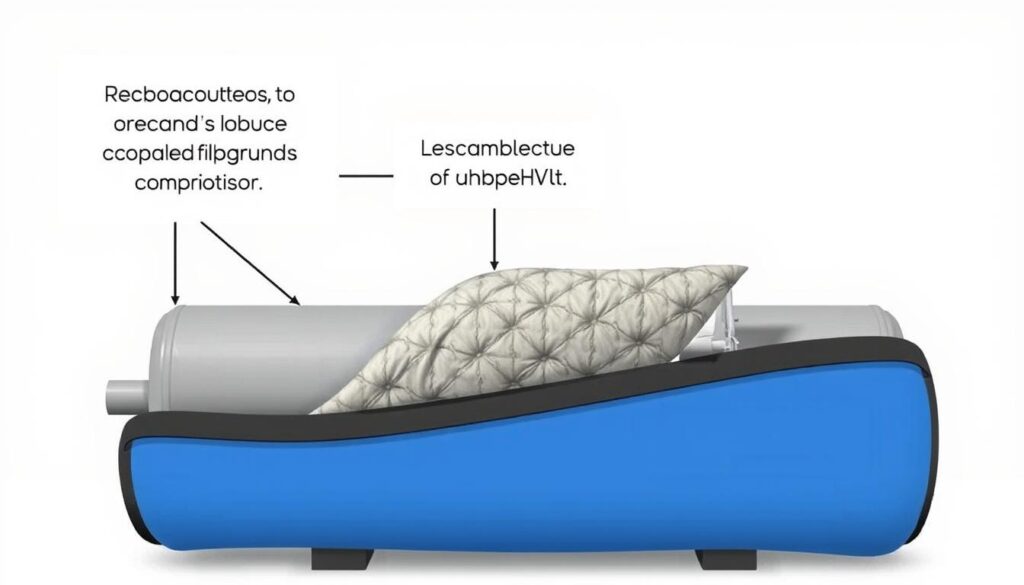
Regular Maintenance and Cleaning
Regular maintenance is crucial for noise reduction. Ensuring that filters are clean, parts are lubricated, and components are secure can significantly contribute to quieter operation. It’s also important to identify and tighten any loose components that may be causing rattling or vibrating noises during system operation.
Professional seasonal maintenance is also vital as it helps address potential noise issues before they become serious problems that could damage the system.
Soundproofing Your Ductwork
Effective soundproofing of your ductwork is crucial for minimizing HVAC noise in your home. By implementing the right soundproofing measures, you can significantly reduce the noise that travels through your ducts and into your living spaces.
Acoustic Liners for Ducts
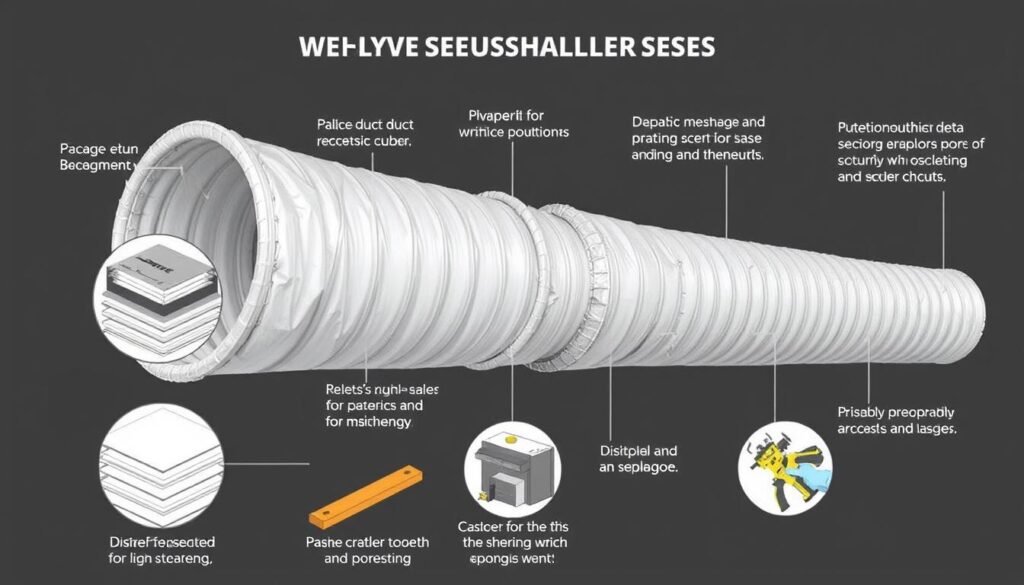
Insulating ducts with acoustic liners is a highly effective method for reducing noise. These liners are designed to absorb sound waves traveling through the ductwork, minimizing the amount of noise that reaches your living spaces through vents. A good acoustic liner should be porous enough to absorb sound effectively while being made of non-toxic materials to ensure indoor air quality.
Duct Silencers Installation
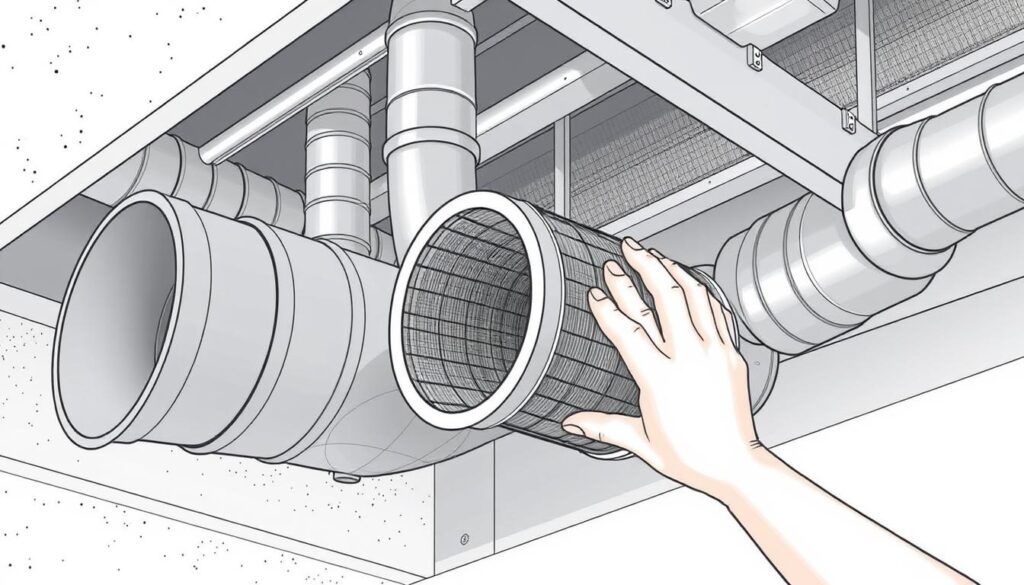
Duct silencers are specifically designed to reduce airflow noise while maintaining proper system performance. They are typically placed between the HVAC unit and the ductwork, preventing noises from entering the ducts and transferring to every room. The installation process involves selecting the right size and type of silencer for your HVAC system to ensure optimal noise reduction.
Sealing Leaks and Gaps
Sealing leaks and gaps in your ductwork is not only essential for improving energy efficiency but also for reducing whistling and rushing noises caused by air escaping. By ensuring that your ductwork is properly sealed, you can minimize noise and enhance the overall performance of your HVAC system.
Flexible duct connectors can also play a crucial role in preventing vibration transfer between the HVAC unit and rigid ductwork, thereby reducing structure-borne noise. When selecting duct insulation materials, it’s essential to choose products that are both effective for sound dampening and safe for indoor air quality.
Choosing the Right Materials
When it comes to soundproofing your ductwork, the choice of materials is critical. Look for materials that are designed for acoustic insulation and are safe for use in HVAC systems. Some materials are specifically engineered to absorb sound waves, making them ideal for reducing noise in ductwork.
Creating Barriers to Block HVAC Noise
By constructing the right barriers, you can significantly reduce the noise generated by your HVAC system. Effective barriers can be the difference between a noisy home environment and a peaceful one. In this section, we’ll explore various methods to create these barriers.
Building an HVAC Closet
One effective way to reduce HVAC noise is by building a dedicated closet for the unit. To act as an effective sound baffle, the closet should be constructed with dense walls and a heavy door. The insulation used must be dense enough to absorb sound waves but also safe to use near the HVAC unit.
When designing the closet, consider using materials that are known for their sound-absorbing properties. Ensure that the closet is well-ventilated to prevent overheating and maintain the efficiency of the HVAC system.
Installing Sound-Dampening Fences for Outdoor Units
For outdoor HVAC units, installing a sound-dampening fence can be an effective noise reduction strategy. Choose materials that are good at dampening sound, such as wood or vinyl. It’s crucial to leave about 3 feet between the air conditioner and the fence to allow for adequate airflow and prevent overheating.
Using Mass Loaded Vinyl Barriers
Mass Loaded Vinyl (MLV) barriers are another effective solution for reducing HVAC noise. MLV is flexible, effective, and can be applied around various HVAC components. Its flexibility makes it an ideal material for wrapping around ducts and other equipment.
When using MLV barriers, ensure that they are properly sealed to prevent sound leakage. It’s also important to maintain proper ventilation around the HVAC equipment to ensure its efficient operation.
In conclusion, creating barriers to block HVAC noise involves careful planning and the right materials. Whether you’re building an HVAC closet, installing a sound-dampening fence, or using MLV barriers, the key is to ensure that the barriers are effective without compromising the system’s efficiency.
Room-Specific Solutions for HVAC Noise
HVAC noise reduction isn’t a one-size-fits-all solution; different rooms require different approaches based on their function, proximity to HVAC components, and existing acoustic properties.
Bedroom Soundproofing Techniques
Creating a sleep-friendly environment in bedrooms is crucial. Strategic vent placement, sound-absorbing materials, and white noise solutions can significantly reduce HVAC noise.
For instance, using Mass Loaded Vinyl (MLV) Barriers on walls or around pipes can effectively block sound waves. An image of MLV Barriers can enhance understanding.
Home Office Noise Reduction
In home offices, concentration is key, and HVAC noise can be a significant distraction. Using sound-absorbing panels and optimizing vent placement can help minimize distractions.
Acoustic Caulk is another useful product for sealing minor cracks and gaps, further reducing noise leakage.
Home Theater Acoustic Treatments
For home theaters, even minimal HVAC noise can detract from the immersive experience. Acoustic treatments such as Quiet Barrier® Acoustic Quilts can be used as sound curtains or blankets to enhance the viewing experience.
These quilts are flexible and can be draped over walls or used to cover vents temporarily when not in use.

Balancing airflow needs with noise reduction is essential in each room. By understanding the specific requirements of each space and applying the right soundproofing techniques, homeowners can enjoy a quieter, more comfortable living environment.
When to Consider Upgrading Your HVAC System
A loud HVAC system is not just annoying; it can also be a sign of inefficiency, making an upgrade a worthwhile consideration. If your heating or cooling unit is old or excessively noisy, it may be time to look into newer models that offer both quieter operation and improved energy efficiency.
Several signs indicate that your HVAC system is too old or inefficient to be effectively quieted through noise reduction methods. These include persistent loud noises, frequent breakdowns, and increased energy bills. When these signs are evident, replacement becomes more practical than modification. Newer HVAC systems incorporate advancements like variable-speed fans, improved insulation, and better component design, leading to significantly quieter operation.
Upgrading to a newer HVAC system offers dual benefits: noise reduction and energy efficiency. Modern air conditioning and heating units are designed to provide a more comfortable home environment while reducing energy consumption. These improvements can offset the initial investment over time through lower utility bills and reduced maintenance costs.
When selecting a new HVAC system with noise considerations in mind, look for specifications such as low decibel ratings and features like soundproofing or noise-reducing technology. It’s also crucial to consider factors like proper sizing for your home and the quality of the unit’s components. Professional installation is key to preventing many noise issues from developing. Proper sizing, placement, and setup of the new system are essential for optimal performance and minimal noise.
In conclusion, upgrading your HVAC system can significantly enhance your home’s comfort and reduce noise pollution. By choosing a modern, efficient, and quieter unit, you can enjoy a more peaceful living space and the long-term benefits of reduced energy costs.

